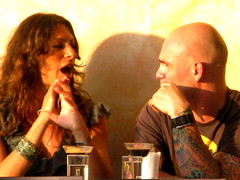
Spring 2011
In our PR Applications classes (COMM 2322 at Southeastern University), we’ll all blog about the same general topic each week during the semester. Your TOWs of 300 words or longershould be posted by Saturday at midnight at the end of each week, unless otherwise notified in class. (Posts that appear past the deadline may not earn any credit, so be sure to stay on top of your blogging deadlines.)
If you are unsure how to get started writing these TOWs, many times you can use this three-pronged approach:
- What did you learn?
- What surprised you?
- What do you want to know more about?
WEEK ONE
- Using the three-pronged approach (above), what are your reactions to the NewsU Course you took on Understanding Media: Processes and Principles? (NOTE: You can post this week’s entry as late as Week Three, as you will not be creating your blogs until that time.)
WEEK TWO
- What is a “public”? Which publics are you a member of? How did you choose to become a member of those publics? (Choose and discuss at least three.) (NOTE: You can post this week’s entry as late as Week Three, as you will not be creating your blogs until that time.)
WEEK THREE
- Listen to at least one hour of PR/marketing podcasts (such as For Immediate Release, Inside PR, PRStudCast, The Creative Career, Coming Up PR, Trafcom News or Marketing Over Coffee). Briefly summarize what you heard. Discuss how listening to PR podcasts can benefit PR students or new PR practitioners. (Optional: Also, write a short review of the podcast at iTunes.)
WEEK FOUR
- If you could work in an era of PR history (from a time before you were born), which one would it be? What interests you most about this era and why?
WEEK FIVE
- Complete NewsU course of your choice (other than the three that are required) that you think would be beneficial for a public relations practitioner. What are your reactions to this course? Would you recommend it to other Journalism/PR students at Southeastern University? Why or why not? (Remember to name and link to the specific course you took. Also, submit your Course Report for the course.)
WEEK SIX
- Based on what you read in Chapter 4 of your Public Relations Strategies & Tactics book, do you think it’s more beneficial for a new PR practitioner to begin his/her career in a PR department or in a PR firm? What are the advantages and disadvantages of each?
WEEK SEVEN
- What advice would you offer to a student who is working on a resume or preparing for a job interview? Be sure to share links to three or more sites / blog posts that would be helpful for a PR student.
WEEK EIGHT
- Participate in a public relations or social media Twitter chat. Petya Georgieva provides a list of 13 possibilities at her Higher & Higher blog. (I highly recommend #PRStudChat, but you are free to chose from any of the 13 options.) Before you participate in the chat, be sure to read Shonali Burke’s tips for how to make the most of a Twitter chat. After the chat, briefly describe the purpose and intended audience of your chosen chat. React to your own participation in the chat using the three-pronged approach (discussed earlier in this blog post).
WEEK NINE
- This week’s topic was inspired by Adam Vincenzini’s Be My Guest month: post something by a guest blogger. Connect with another blogger (it can, but doesn’t have to, be someone in your class) and exchange blog posts for the week. (You don’t have to write something new for the other blogger . . . share your favorite post you’ve written this semester.) In your own blog, make it really clear that the post is written by another person, and link to your guest’s blog.
WEEK TEN
- Watch my interview with Martin Waxman. Use the three-pronged approach (described above) to react to the interview.
OR
- Watch my interview with Kneale Mann. Use the three-pronged approach (described above) to react to the interview.
WEEK ELEVEN
- TBA
WEEK 12
- Write a post about the aspect of public relations that you have chosen for your presentation this semester. If you have created a PowerPoint or Prezi, embed it into your post.
WEEK 13
- Create a list of the top ten things you have learned about public relations this semester. (Remember that the post still needs to be 300 words minimum, so you will need to elaborate on your choices for the list.)






